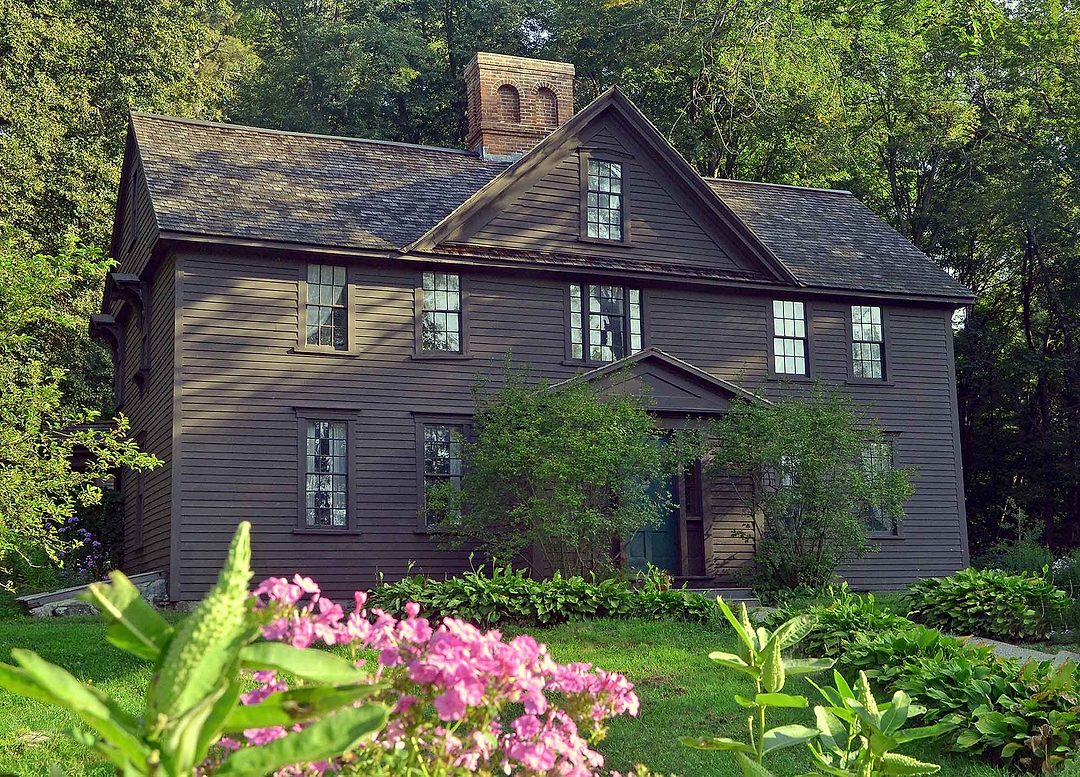Concord is a town steeped in history. From the American Revolution that began here in 1775, to the beginnings of transcendentalism in the 1830’s. From ground-breaking social justice activists who opposed slavery and supported women’s rights, to authors whose works are pillars of the American literary canon. While we could happily spend a lifetime studying the myriad aspects of Concord’s history and its vibrant contemporary society, here are just a few of our favorite places to visit.
Concord Museum
www.concordmuseum.org
Concord Museum includes in its collections some of the most important artifacts from the past three centuries. This is where you’ll find one of the actual lanterns that Paul Revere ordered to be hung in the belfry of Boston’s Christ Church on the night of April 18, 1775 to alert colonists that British regulars were on the march! You can also see the simple green desk on which Henry David Thoreau wrote Walden, Civil Disobedience, and more. Whether your interests lie in a Late Paleoindian spearhead found in the Concord River, or the extraordinary silver work of Paul Revere, there is something here to capture your imagination.
The Old Manse
www.thetrustees.org/places-to-visit/metro-west/old-manse.html
Ralph Waldo Emerson lived here and drafted his famous essay Nature in an upstairs room. Almost a decade later, Nathaniel Hawthorne and his wife Sophia moved into the Old Manse following their marriage in 1842 and lived there until 1845. You can still see the poems that the young newlyweds wrote to each other etched on the windowpanes of the house. Hawthorne memorialized the house in Mosses From an Old Manse.
The Robbins House
www.robbinshouse.org
The rich history of African Americans in Concord is one aspect of the town that is not as widely known as our revolutionary and literary heritage. The Robbins House is dedicated to raising awareness of Concord’s African, African American, and anti-slavery history from the 17th through the 19th centuries.
The Robbins House is an early 19th century house formerly inhabited by the first generation of descendants of formerly enslaved African American Revolutionary War veteran Caesar Robbins, and by fugitive slave Jack Garrison. The stories of the occupants of The Robbins House reveal the ways in which the first generations of free Concord African Americans pursued independence and contributed to the antislavery movement and abolitionist causes. The Robbins House website includes an excellent walking map of African American and anti-slavery sites in and around Concord.
Walden Pond
State Reservation
www.nps.gov/places/walden-pond-in-the-walden-pond-state-reservation.htm
Walden Pond is best known for being the place at which Henry David Thoreau built his modest log cabin and lived for two years. Nearly 600,000 people visit Waldon Pond each year, many to learn more about Thoreau and visit the replica of his cabin. The pond and surrounding 462 acres are now loved as much for their stunning hiking trails and lovely places to swim, fish, and canoe.
Louisa May Alcott’s Orchard House
www.louisamayalcott.org
Orchard House is best known as the home where Louisa May Alcott wrote her most famous book, Little Women. Amazingly, there have been no major structural changes to the house since the Alcotts’ time, and approximately 80% of the furnishings on display were owned by the Alcotts, ensuring that the rooms look very much as they did when the family lived there.
Hillside Chapel on the grounds of Orchard House housed “The Concord Summer School of Philosophy” from 1880-1888. The school was founded by Amos Bronson Alcott and hosted a series of lectures and discussions on a range of philosophical topics.

Minute Man National Historical Park
www.nps.gov/mima/index.htm
Minute Man National Historical Park spans 970 acres and includes many of the area’s most important sites.
North Bridge and Minute Man Statue
It was here on the North Bridge that British troops faced the militias and Minutemen of the region. As the militiamen marched toward the bridge, shots rang out from the British soldiers. In response – and for the first time in the Colonies’ history - colonists fired on British soldiers. America’s Revolutionary War had begun!
The famous statue by Daniel Chester French was unveiled on April 19, 1875 and sits near the spot where two local militiamen were killed on April 19, 1775. The statue was cast from ten Civil War-era cannons and shows a minuteman putting down his plow to pick up a gun.
Battle Road Trail and Witness Houses
The Battle Road Trail follows, in part, the route taken by the British soldiers as they retreated following the battle at the North Bridge. The Trail passes several key places, including Meriam’s corner, Hartwell Tavern, and the Bloody Angle.
Currently, 11 Witness Houses stand along the Battle Road. These houses, carefully preserved, stood witness to the historic events of April 19, 1775 and several played integral roles in the events of that day. The home of Elisha Jones was only yards from the battle at Concord’s North Bridge. Even today, you can see the mark where a bullet, aimed at Elisha Jones on April 19, 1775, struck his home.
The Wayside
The Wayside has been home to three literary families: the Alcotts, Hawthornes, and Lothrops and is the only National Historic Landmark to have been lived in by three literary families.
The Alcotts lived in the house from 1845-1852 and called it “Hillside.” Although Louisa May Alcott did not live here when she wrote Little Women, she and her sisters spent much of their childhoods here.
Nathaniel Hawthorne and his family lived here from 1852 through 1869 and gave the house the name it carries today, “The Wayside.”
Harriett Lothrop, who wrote under the name Margaret Sidney, is best remembered for her book Five Little Peppers. She and her daughter, Margaret Lothrop, lived in The Wayside from 1883 to 1965, when it became part of Minute Man National Historical Park.
 ©istock.com/sphraner
©istock.com/sphranerCemeteries
Concord encompasses three famous cemeteries, all of which are worth visiting.
www.concordma.gov/1955/Town-of-
Concord-Cemeteries
Old Hill Burying Ground
Concord’s earliest burial site is located on a hillside overlooking the town center and includes some of the town’s oldest graves. John Jack, likely Concord’s first enslaved man to gain his freedom and purchase land and a house, is buried here. His epitaph, written by Daniel Bliss, is famous around the world.
South Burying Ground
Also called Main Street Burying Ground, this is Concord’s second-oldest cemetery.
Sleepy Hollow Cemetery
www.friendsofsleepyhollow.org
Sleepy Hollow is Concord’s largest, and best known, cemetery. Spanning 119 acres, Sleepy Hollow includes the graves of Bronson Alcott, Louisa May Alcott, Ralph Waldo Emerson, Daniel Chester French, Nathaniel Hawthorne, Sophia Peabody Hawthorne, Henry David Thoreau, and more.
The cemetery is also home to the famous sculpture “Mourning Victory” by Daniel Chester French. The haunting statue watches over the Melvin memorial, burial place of Asa, John, and Samuel Melvin – Concord brothers killed during the Civil War.
For current information on which sites are open during the COVID-19 pandemic, please check the websites or visit the Concord Visitor Center at 58 Main Street, open daily 10:00 to 4:00.


